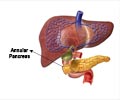
‘Long-lasting radionuclide therapy for advanced neuroendocrine tumors has been found to be effective in a first-in-human study.’
Tweet it Now
However, the peptide quickly clears from the blood through the kidneys limiting the accumulation of radioactivity within tumors and making additional treatment cycles necessary to provide the therapeutic dose. This first-in-human, first-in-class, Phase I trial (ID: NCT03308682) investigated the safety and dosimetry of a novel long-lasting radiolabeled somatostatin analogue that adds an albumin-binding Evans blue (EB, an azo dye) derivative to 177Lu-DOTATATE. Albumin, the most abundant plasma protein in human blood, is a natural transport protein and has a long circulatory half-life.
"177Lu-DOTA-EB-TATE is a "three-in-one" therapeutic compound, with an octreotate peptide to find the tumor, an Evans blue motif, which uses endogenous albumin as a reversible carrier to effectively extend the half-life in the blood and substantially increase targeted accumulation and retention within the tumor, and a therapeutic radionuclide to kill the tumor cells, to finally provide effective treatment of NETs," explains Shawn(Xiaoyuan) Chen, PhD, senior investigator, of National Institute of Biomedical Imaging and Bioengineering at the National Institutes of Health , Bethesda, Maryland.
For the study, conducted in collaboration with researchers at the U.S. National Institute of Biomedical Imaging and Bioengineering, 8 patients (6 men and 2 women ranging in age from 27 to 61 years old) with advanced metastatic neuroendocrine tumors were recruited from Peking Union Medical College Hospital and the Chinese Academy of Medical Sciences in Beijing, China.
Each patient underwent whole-body 68Ga-DOTATATE PET/CT. Five of the patients then accepted intravenous injection with a single dose of 0.35-0.70 GBq of 177Lu-DOTA-EB-TATE within one week, and were monitored at 2, 24, 72, 120 and 168 hours after 177Lu-DOTA-EB-TATE administration with serial whole-body planar and single photon emission computed tomography (SPECT)/CT images acquired. The other 3 patients accepted a dose of 0.28-0.41 GBq of 177Lu-DOTATATE and were monitored at 1, 3, 4, 24 and 72 hours with the same imaging procedures. Complete physical examinations, including vital signs, blood count, biochemistry, and immunology analyses were performed immediately before and 1, 3, and 7 days, as well as 3 months, after treatment.
Advertisement
Jingjing Zhang and Zhaohui Zhu of Peking Union Medical College Hospital point out, "By introducing an albumin binding moiety, this long-lasting radiolabeled somatostatin analogue has remarkably enhanced uptake and retention in SSTR-positive tumors, which is important to increase the therapeutic efficacy in patients. With proper selection of patients with advanced metastatic neuroendocrine tumors, 177Lu-DOTA-EB-TATE has great potential to be a highly effective treatment, while providing a safe dose with less frequency of administration than is possible with 177Lu-DOTATATE."
Advertisement









